DOWNLOAD LINK AT THE END OF THE POST
Long time no see my friends, I have been quite busy with my growing small business, but I still keep an eye out on the comments and requests on my blog and Facebook page. I have received quite a number of requests from newbie sewists for a simple skirt design. And after a bit of procrastination, I am presenting the Layla midi pencil skirt – a very simple yet super beautiful piece of garment!
This skirt is made from the very basic skirt pattern – but I eliminated the front waist darts (which may save you maybe 10 minutes of the whole process). It falls at the middle of the calf (if you are about regular height 5’7/170cm), or above ankle if you are petite like me.
This pencil skirt is a must have item in the wardrobe, because it can be mixed with almost any kind of top garments. If you want to be modest and formal, button down shirt will be a great choice. For a more casual look, mix it with T shirt and cardigan. And if you want to feel sexy, match it with spaghetti strap camisole or bustier. It can be worn all 4 seasons of the year!
If you are wondering how this design can go with different colors and print, look at it in 3D simulation:
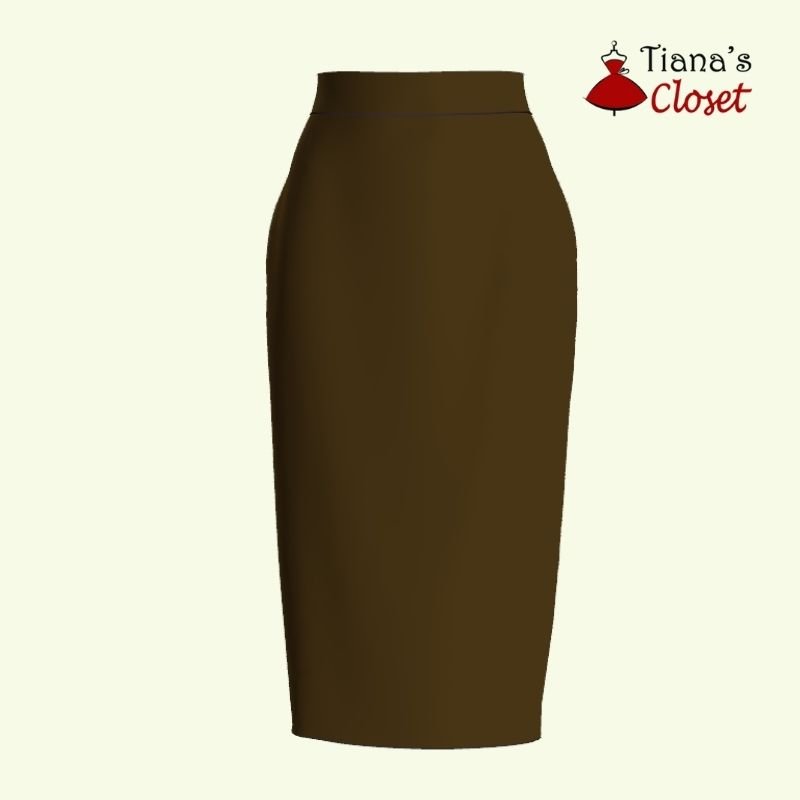
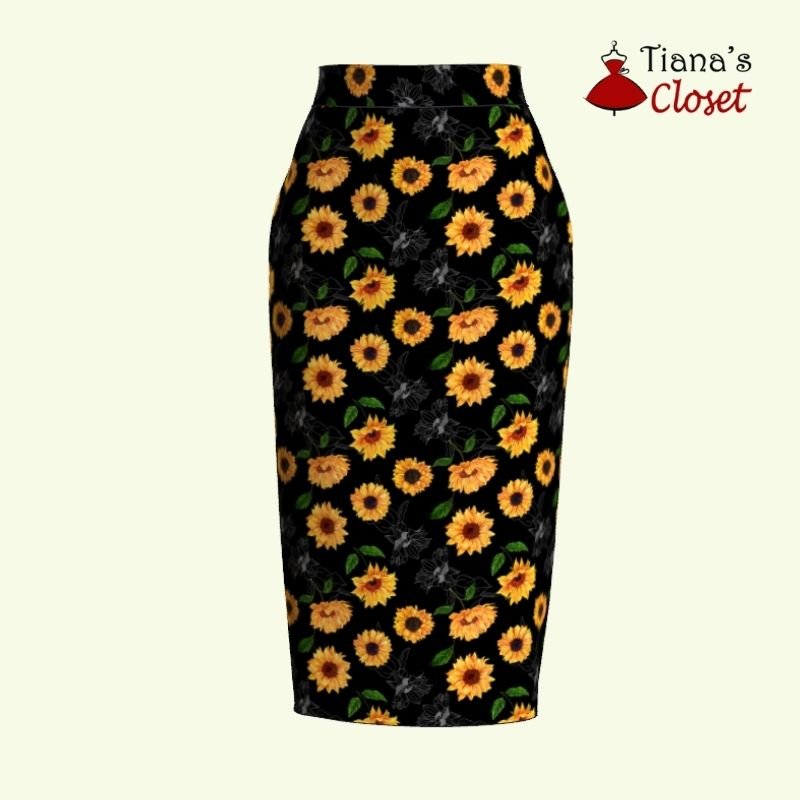
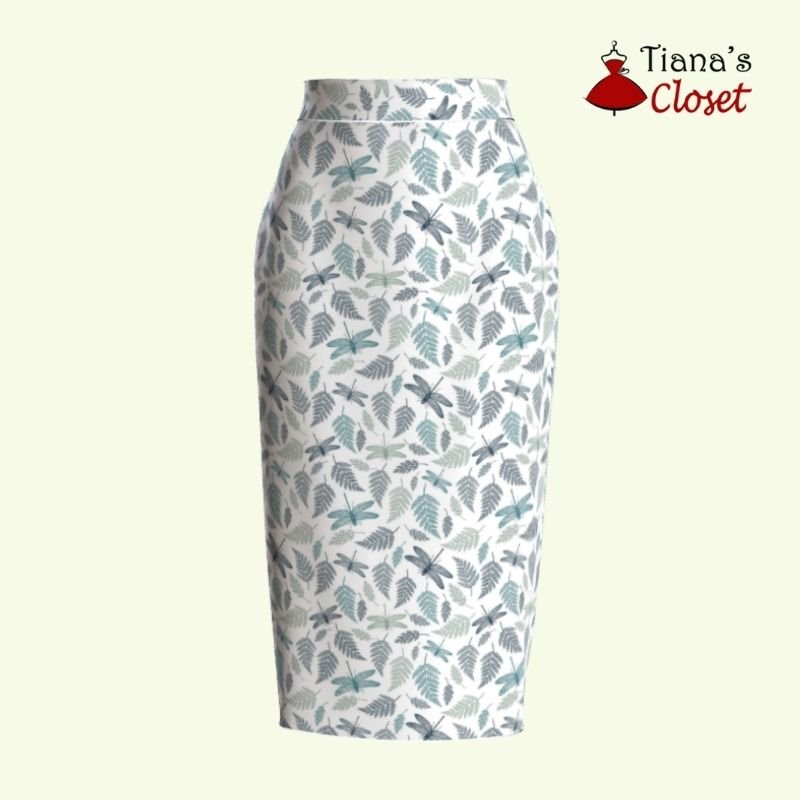
As usual, my pattern is made in 10 sizes from XXS to 5XL, so you will find yourself a suitable size. You can also lengthen or shorten the hemline to get your desired length – you can even make a maxi skirt from this pattern.
The pattern is made using layered PDF, please check for your desired size before printing so you won’t waste your paper. I have included a first page with many details about sizing and printing, so please first read the first page and make sure you know what size you need! If you still do not know how to print a layered PDF, please check for the printing instruction in this post: PRINTING GUIDE.
You can print this using your home printer and A4/Letter paper. I calculated the printing area so that you will be able to use either type of paper to print the pattern out perfectly. Always print the first page first and check with the test square if you are printing at the right scale before you print out the whole pattern – avoid waste of ink and waste of paper, save the earth!
Some PC may print smaller than actual size even when you choose 100% scale – I don’t know why this problem exist, but my HP laptop cannot print true to size. I have to scale up to 103% to get the right size. You may need to check with your PC to see if it prints true to size, if not, scale up a bit.
SEWING INSTRUCTION
You will need
- Fabric of your choice
- Invisible zippers
- Some fusible interfacing (preferably medium or heavy weight, for the waistband)
- Scissors, pencil or fabric marker, ruler, pins
- Sewing machine or needle and thread
- Printed pattern
What fabric can be used for this project? This design is made for woven fabric.
How much fabric do you need for this piece of garment? To be precise, you may need to check how much fabric you need before buying. It will depend on the selected pattern size, the width, and design of the fabric you plan to use. Just to be sure, print all the paper patterns and lay them out at the width of fabric you plan to use (usually from 90 to 150 centimeters or 35 to 60 inches). Measure how much fabric you will need. Don’t forget to account for pieces that need to be cut multiple times and pieces that are cut on the fold.
Cutting instruction:
After printing out and taping all the pattern pages together, you will get something similar to this image:
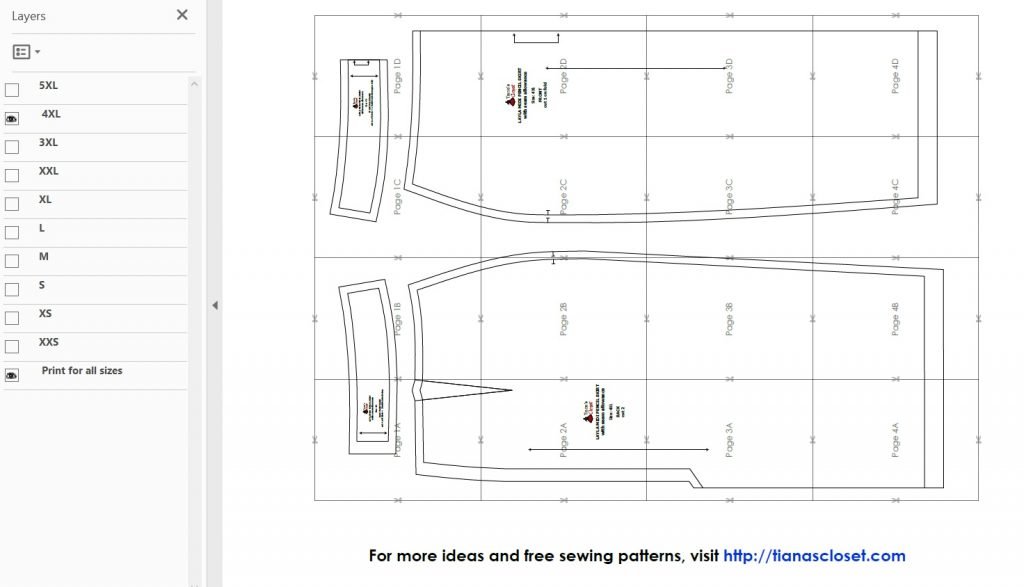
You will see that there are 2 sets of lines on each pattern size. The inner lines are sewing line (and you sew along these lines), and the outer lines are cutting lines (you cut the fabric along these lines, remember the folding lines where you have to fold the fabric before cutting). The distance between sewing line and cutting line is seam allowance, and it varies from point to point. For example, the side seam allowance is about 1/2 inch (1.2cm), and seam allowance at hemline is 1 inch (2.5cm). This is the reason why I do not remove the sewing lines from the pattern. Please use it as a guide to know how much seam allowance you need to give at each seam.
Fabric will be cut into following pieces:
- Front: cut 1 piece on the fold
- Back: cut 2 pieces
- Front Waistband: cut 2 pieces self fabric + 1 piece fusible interfacing (on the fold)
- Back Waistband: cut 4 pieces self fabric + 2 pieces fusible interfacing
Make sure to mark all notches and other design features such as darts, pleats etc. from the pattern pieces onto your fabric. When sewing the garment, pay attention to notches, they must match up.
Sewing instruction:
1. Serge the fabric to prevent the sides from unraveling.
2. Apply fusible interfacing to waistband pieces.
3. Fold, pin and sew the waist darts on back skirt.
4. Place Front and Back pieces right side facing. Pin and sew the side seam. Repeat with both sides.
5. Place one pair of Front Waistband and Back Waistband right side facing. Pin and sew side seams. Repeat with the other pair. Place 2 sewn waistband pieces right side facing. Match the side seams, pin and sew to get the Waistband.
6. Place Front Skirt and Back Skirt right side facing. Match notches, pin and sew the side seams. You will get the main garment.
7. Place the main garment and waistband right side facing. Match the seams, pin and sew the main garment to one side of the waistband.
8. Sew the center back seam. Attach invisible zipper to the back of the skirt.
You may need to learn how to sew kick pleat. There is a post about this on Thread Magazine that I think will be useful: https://www.threadsmagazine.com/2012/10/31/how-to-sew-a-basic-kick-pleat
9. Finish the waistband using stitch in the ditch technique, or hand sew if you like.
10. Hem the skirt. And you’ve done!
And here is the download link:
LAYLA MIDI PENCIL SKIRT (SIZE XXS-5XL)
Happy sewing! And don’t forget to share your project on my Facebook page: Tiana’s Closet Sewing Patterns
Tiana

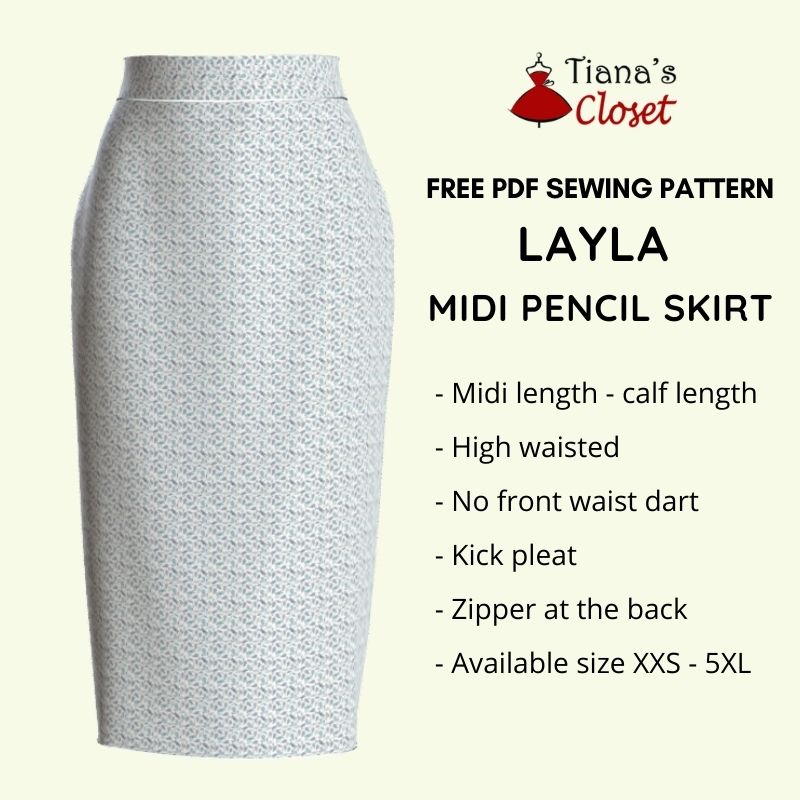
Hi! I love your patterns and appreciate your generosity in donating them to us.
Is there a formula to convert this pencil skirt to an A-line? Just draw a line from the widest point at the hips down? Thanks so much, Terri